11 Valuable Antique Kitchen Pieces You Might Have at Home
Antique kitchenware pieces can hold more value than many people realize. These items often carry history and craftsmanship that make them special to collectors. Some old utensils and cookware can sell for surprising amounts of money. Knowing which pieces are valuable can help you recognize hidden treasures. This article will explore some antique kitchenware that has stood the test of time and gained worth.
This post may contain affiliate links, which helps keep this content free. Please read our disclosure for more info.
Victorian Sterling Silver Tea Sets
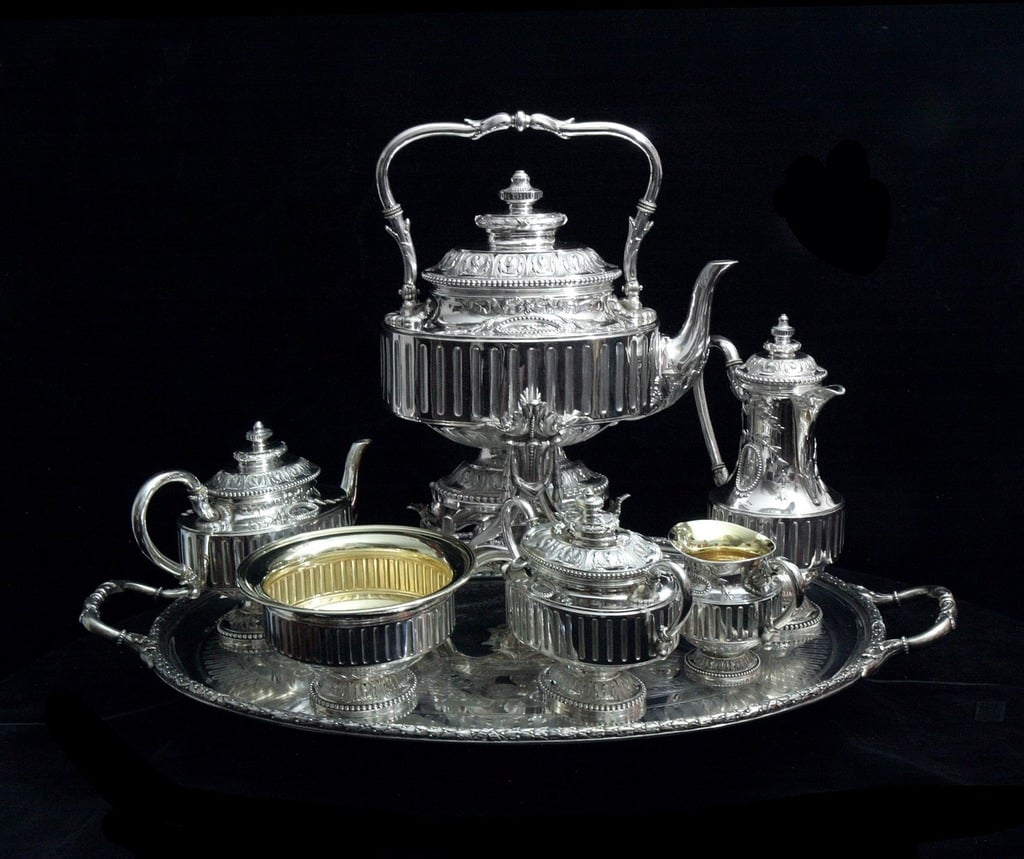
Victorian Sterling Silver Tea Sets were crafted during the Victorian era, roughly between 1837 and 1901. These elegant tea sets were often produced by renowned silversmith companies in England and America, including Tiffany & Co. and Gorham. Their intricate designs and high-quality silver make them highly collectible today. Prices for antique sets vary widely, ranging from a few thousand to tens of thousands of dollars depending on condition and maker.
Though original Victorian tea sets are no longer produced, modern sterling silver tea sets inspired by Victorian designs can be found. Collectors often seek out complete sets with matching pieces, which increases value. Proper care and polishing are necessary to maintain their shine and prevent tarnish. These tea sets offer both historical value and timeless beauty.
Griswold Cast Iron Skillets
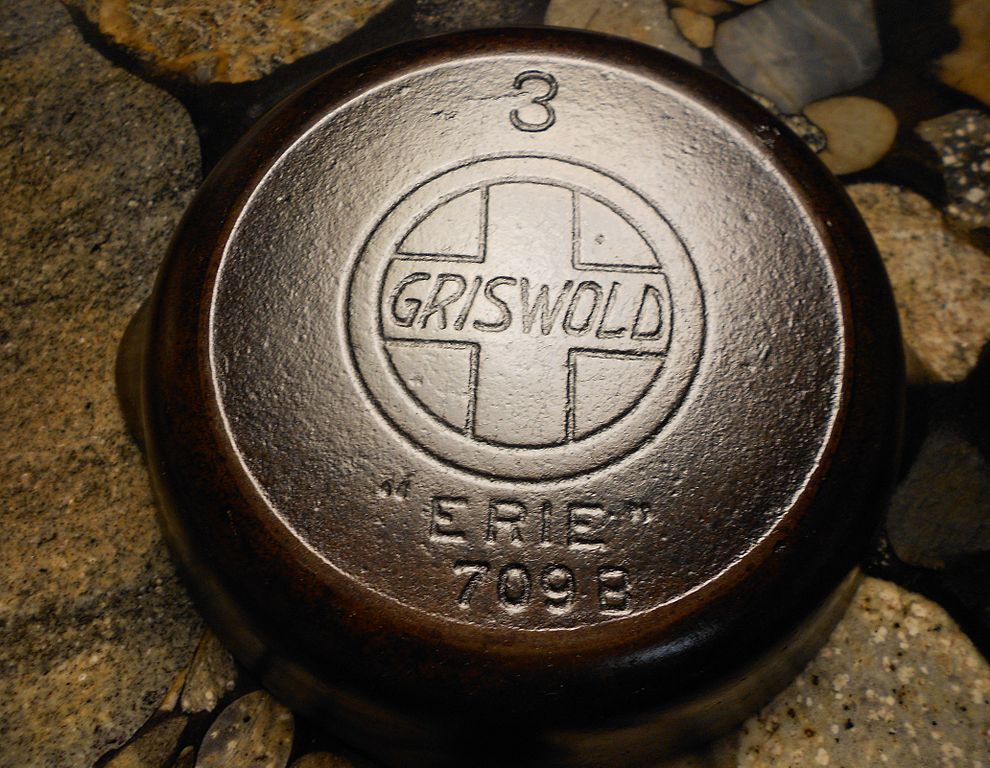
Griswold Cast Iron Skillets were made by the Griswold Manufacturing Company in Erie, Pennsylvania from the late 19th century until the 1950s. These skillets are prized for their excellent craftsmanship and smooth cooking surface. They became a staple in American kitchens and are now sought-after by collectors and cooking enthusiasts. Depending on size and condition, Griswold skillets can sell for several hundred to a few thousand dollars.
Original Griswold skillets are no longer made, but cast iron cookware remains popular today. Vintage Griswold pieces are valued for their durability and cooking performance. Seasoning and regular maintenance keep them in good shape. Owning one is like having a piece of American kitchen history.
Antique Copper Jelly Molds
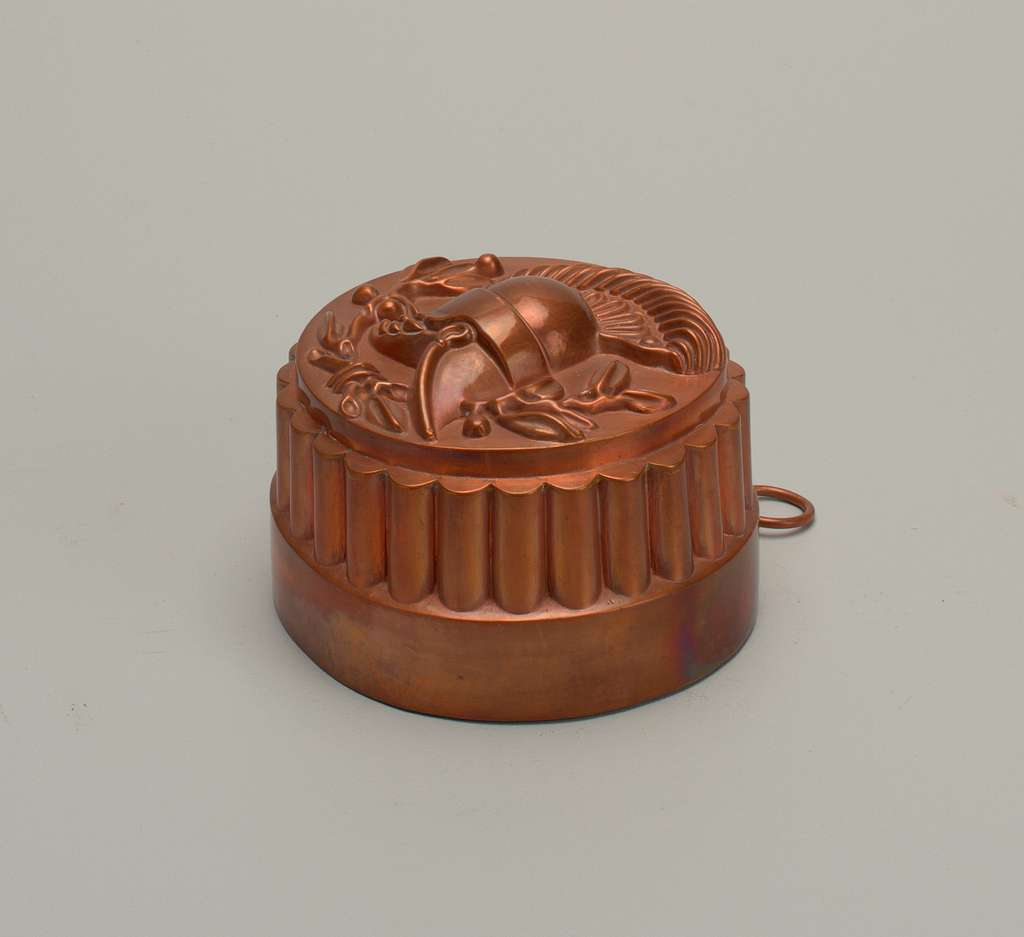
Copper jelly molds were popular in Victorian England during the 1800s. Often crafted by French or English makers, they featured ornate shapes and detailed engravings. The value lies in the heavy copper material and decorative appeal. Depending on size and pattern, prices range from $100 to $600.
Collectors enjoy the historical aspect of dessert presentation in elegant kitchens. Patina adds character, but pristine molds are especially prized. Some have maker’s marks which further increase their value. These pieces now serve as eye-catching kitchen decor.
Pyrex Refrigerator Dishes
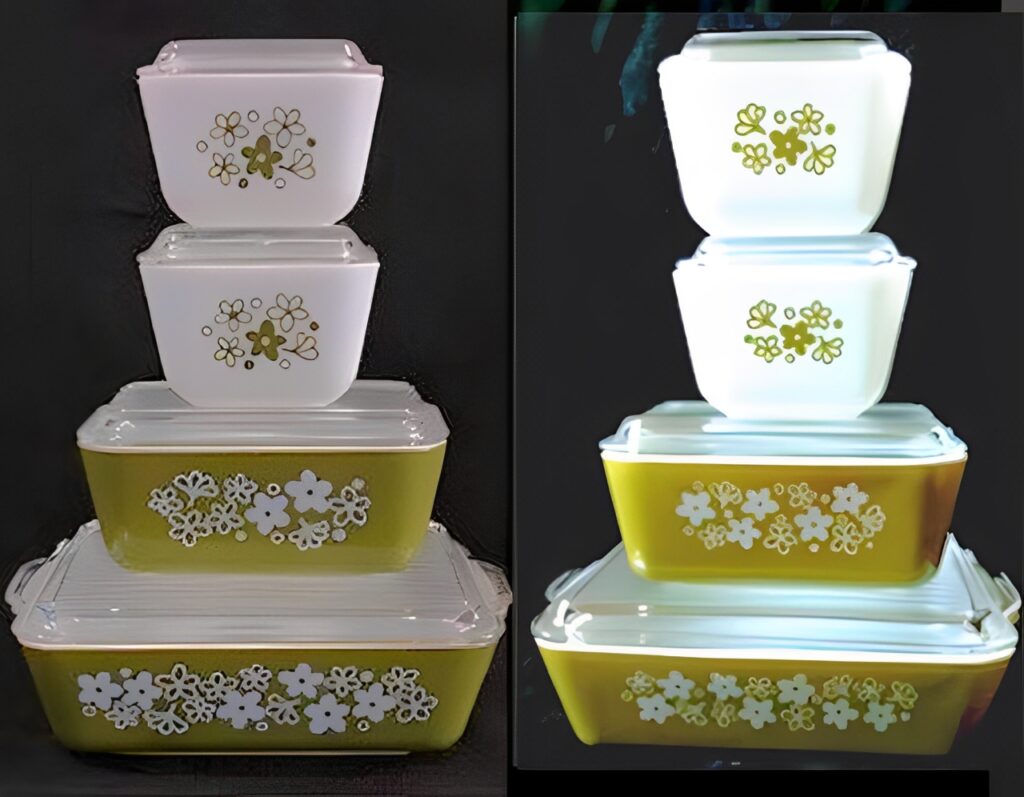
Pyrex Refrigerator Dishes were designed to store leftovers and were popular from the 1940s through the 1960s. Made of durable glass with tight-fitting lids, they offered a practical solution for food storage. Their collectible value depends on pattern, color, and condition, with prices ranging from $20 to several hundred dollars. Many designs are sought after by collectors of vintage kitchenware.
Though modern food storage containers have largely replaced these dishes, original Pyrex refrigerator dishes remain functional. Collectors appreciate their quality and retro appeal. Sets with original lids are especially valuable. These dishes are a reminder of classic kitchen organization.
Jadeite Dinnerware
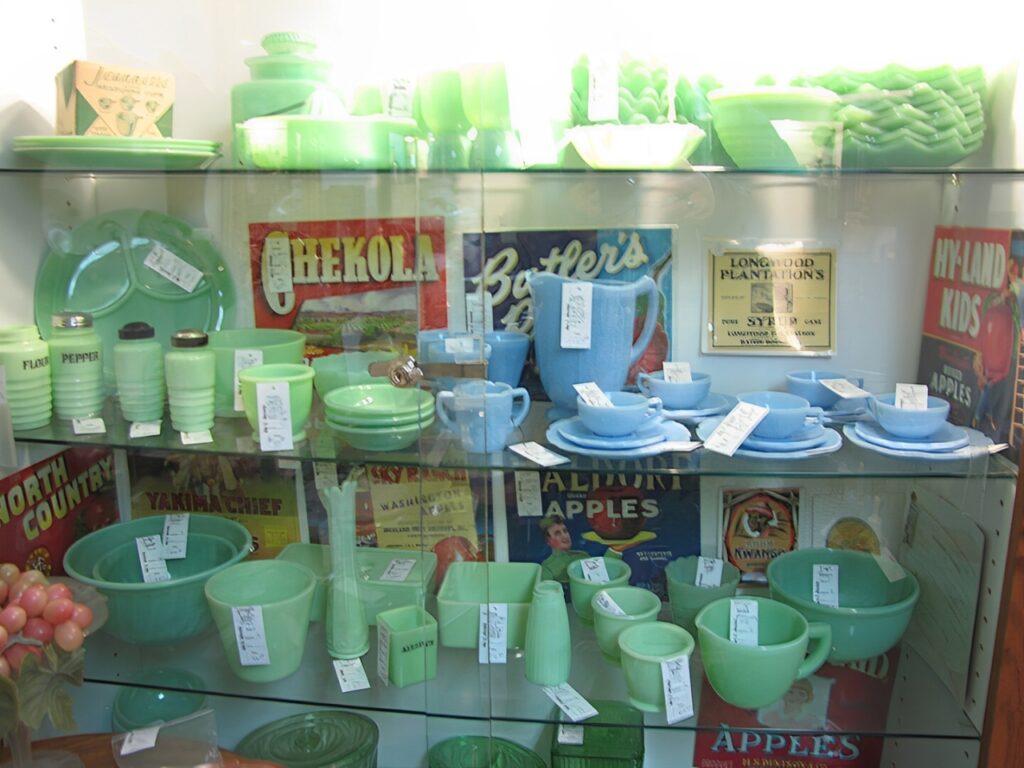
Jadeite Dinnerware is a type of opaque green glassware produced mainly by Anchor Hocking in the mid-20th century. Known for its soft green color and sturdy design, jadeite became popular in American kitchens. Collectors prize early production pieces and sets, with prices often ranging from $50 to several thousand dollars. Many pieces are still available through vintage shops and online sellers.
Modern reproductions exist but original jadeite is more valuable due to its history and unique color. It is often used both for display and everyday dining. Proper care includes gentle washing to maintain color and finish. Jadeite remains a classic symbol of mid-century style.
Russel Wright American Modern Dinnerware
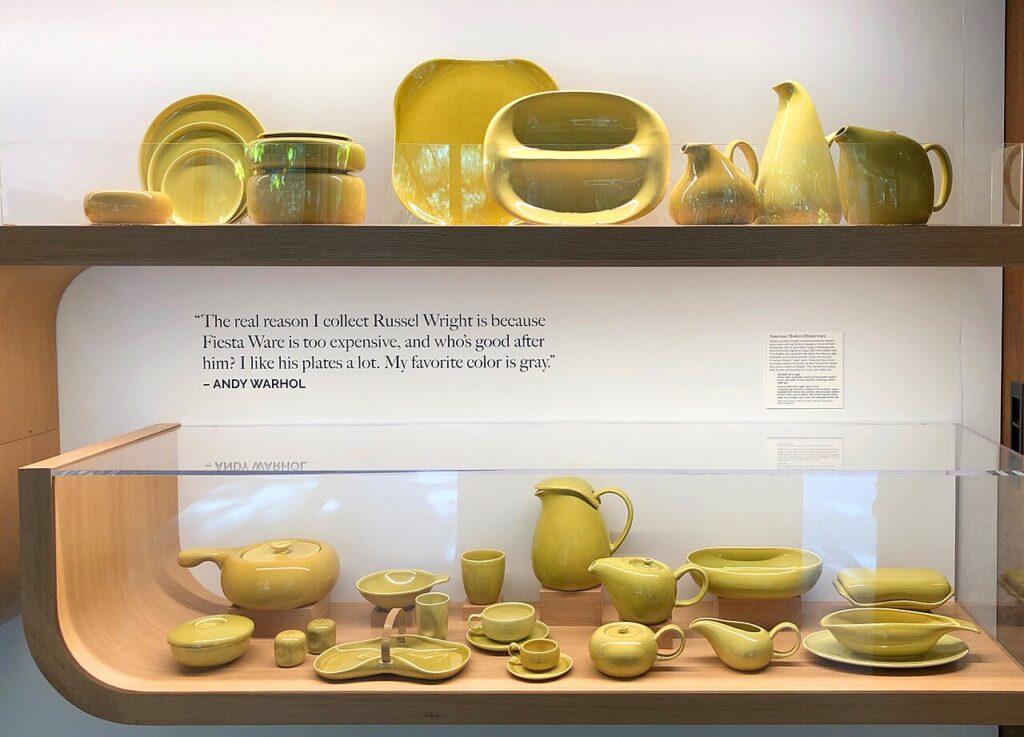
Russel Wright’s American Modern Dinnerware was introduced in the 1930s and became widely popular for its sleek, functional design. Produced by Steubenville Pottery, these pieces helped define modern American style. The dinnerware is collectible due to its design influence and historical significance. Prices can range from $20 for individual pieces to thousands for complete sets.
While original American Modern pieces are no longer produced, Wright’s designs continue to inspire modern dinnerware. Collectors seek items in good condition with recognizable patterns. These pieces combine style with practicality. They remain popular among vintage dinnerware enthusiasts.
Cathrineholm Enamelware
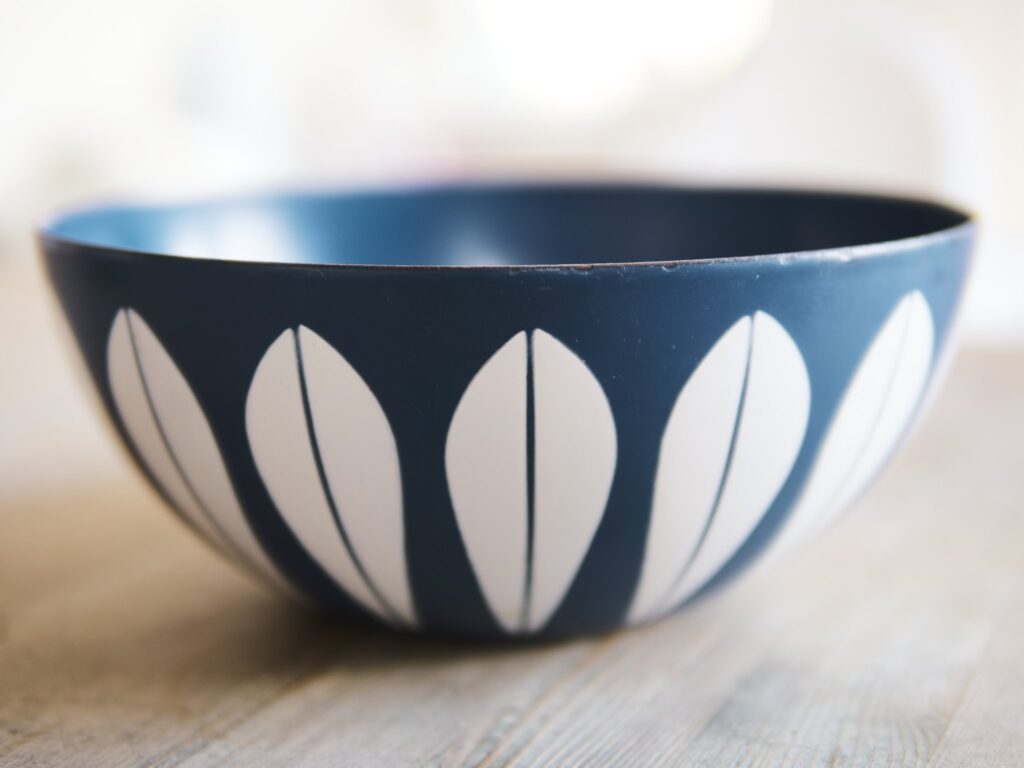
Cathrineholm Enamelware is famous for its distinctive Scandinavian designs, produced in Norway from the 1950s through the 1970s. Known for bold colors and patterns, especially the lotus motif, these cookware pieces are highly collectible. Prices vary widely, with some rare pieces reaching several hundred to thousands of dollars. The enamelware is durable and often still functional.
Original Cathrineholm pieces are no longer produced but are popular in vintage and mid-century collections. They require gentle cleaning to preserve the enamel finish. Many collectors display these items as decorative art. Their design and quality make them timeless kitchenware.
Foley Food Mills
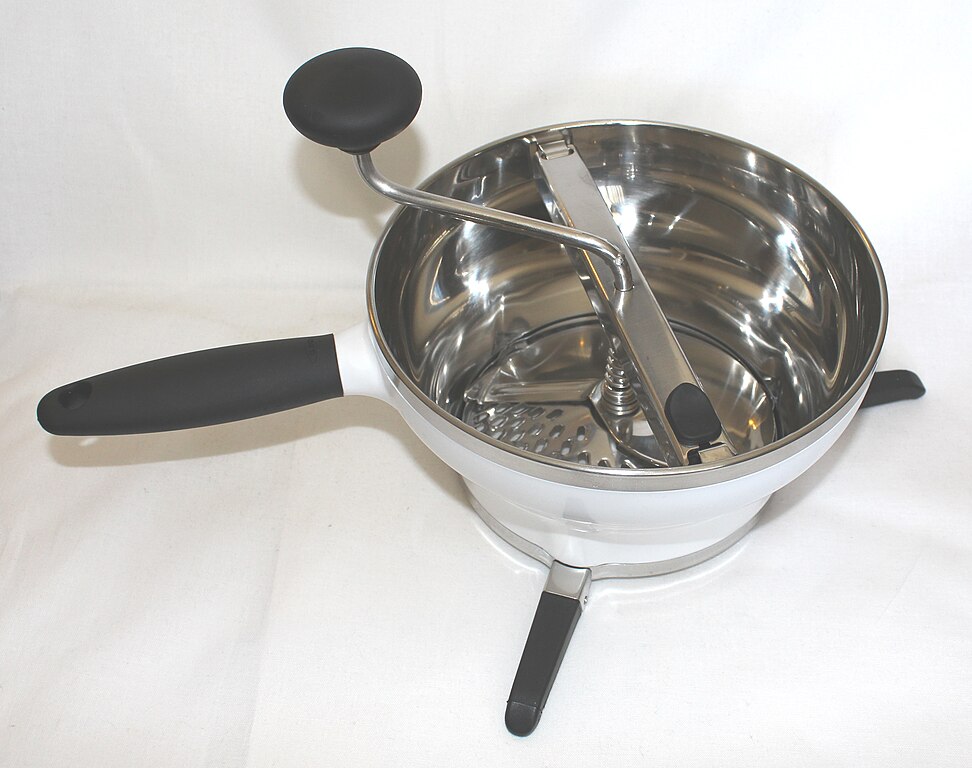
The Foley food mill was introduced in the 1930s and quickly became a kitchen staple. Manufactured by Foley Manufacturing Company in Minnesota, it was used for straining fruits and vegetables. Collectors value the simplicity, durability, and original packaging. A working vintage model can bring $40 to $100.
Its stainless steel design has aged well and is still functional today. Cooks appreciate the nostalgia and usefulness of these older models. Mills with wooden handles are especially desirable. These tools reflect mid-century practicality and design.
Vintage Soda Syphons
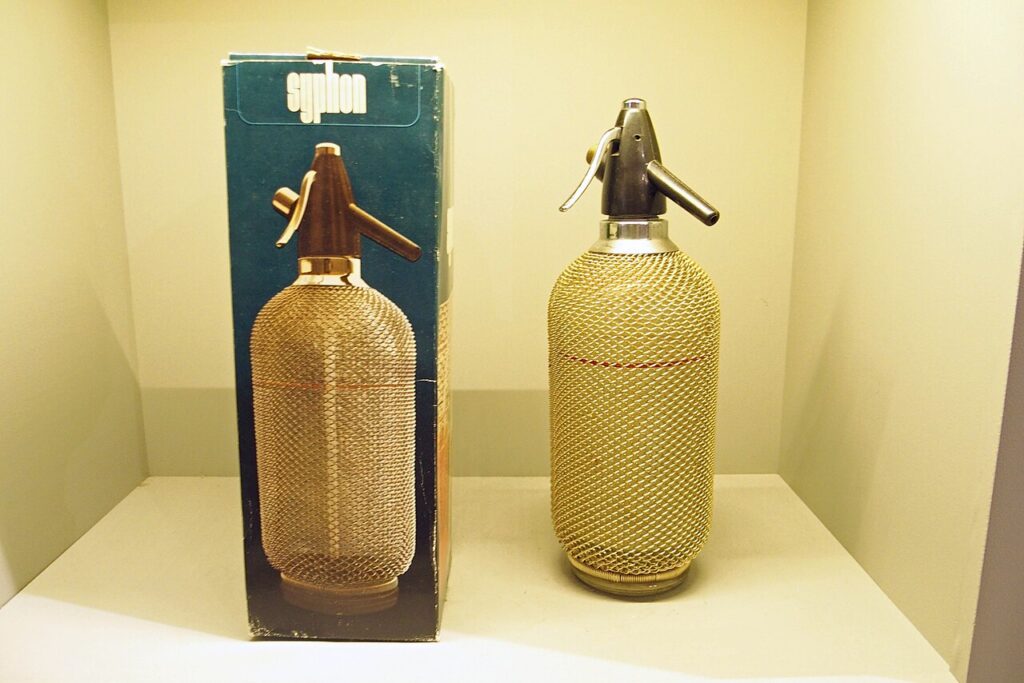
Soda syphons became fashionable in the 1920s and 1930s, especially in European cocktail culture. Made in Austria, Czechoslovakia, or France, they often came with mesh casings or etched designs. Their art deco aesthetic adds to their current value, which can be $100 to $400 each.
The value increases if the original box or gas cartridges are included. Collectors enjoy their association with speakeasies and early barware. Some syphons feature colorful glass or logos from defunct brands. They are now used more for decoration than function.
Crockery Butter Molds
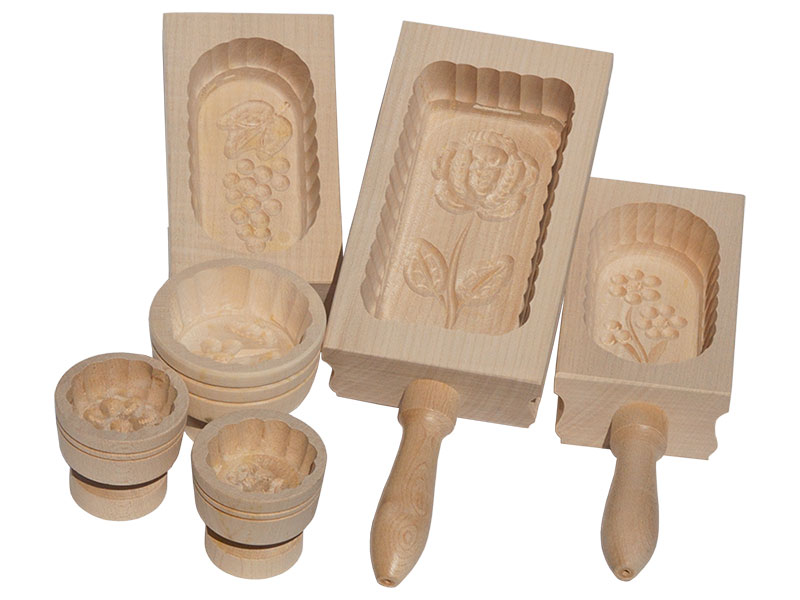
Butter molds were used throughout the 1800s to shape and stamp homemade butter. They were often carved from wood with decorative motifs like flowers or farm scenes. Molds with intricate designs can fetch $75 to $250 today.
The appeal lies in the hand-carved craftsmanship and the history of the home dairy. Clean condition and visible carvings increase value. Some molds came as part of a matching churn set. These pieces are now charming rustic collectibles.
Toleware Tea Caddies
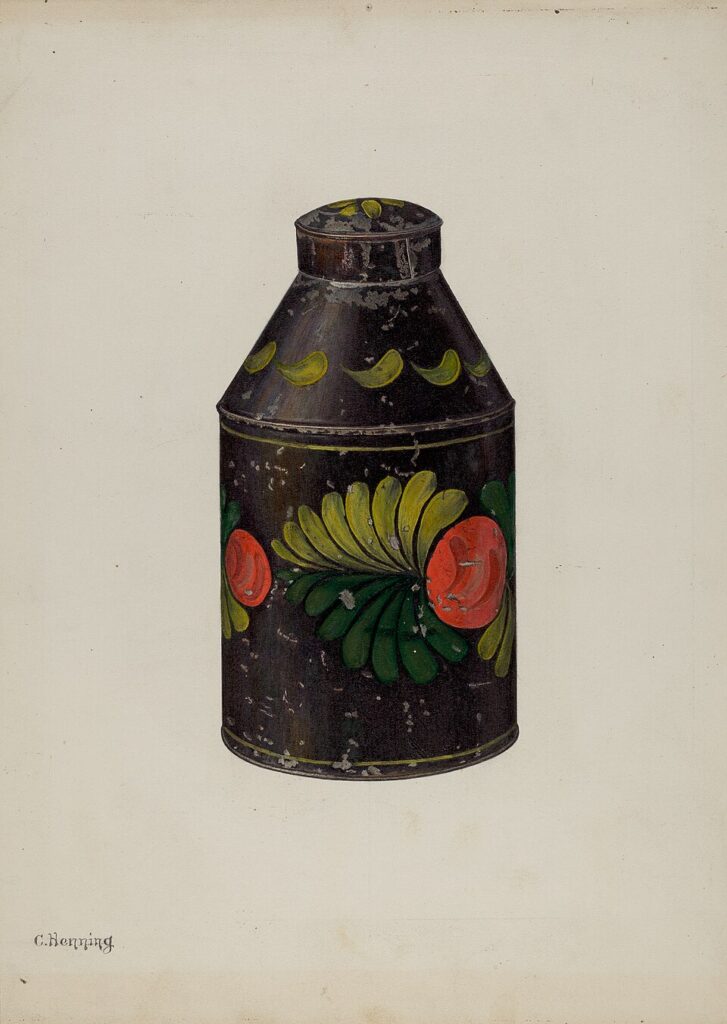
Toleware refers to painted tinware, and tea caddies were among the most decorative. Originating in 18th-century Europe, they were often hand-painted in floral or chinoiserie patterns. Authentic antique caddies can reach prices of $150 to $500.
Tea was once a luxury, so storing it in a decorated caddy showed wealth. The painted designs are now appreciated as folk art. Look for signs of hand-painting and wear consistent with age. Reproductions exist, so age verification is important.
Vintage KitchenAid Mixers
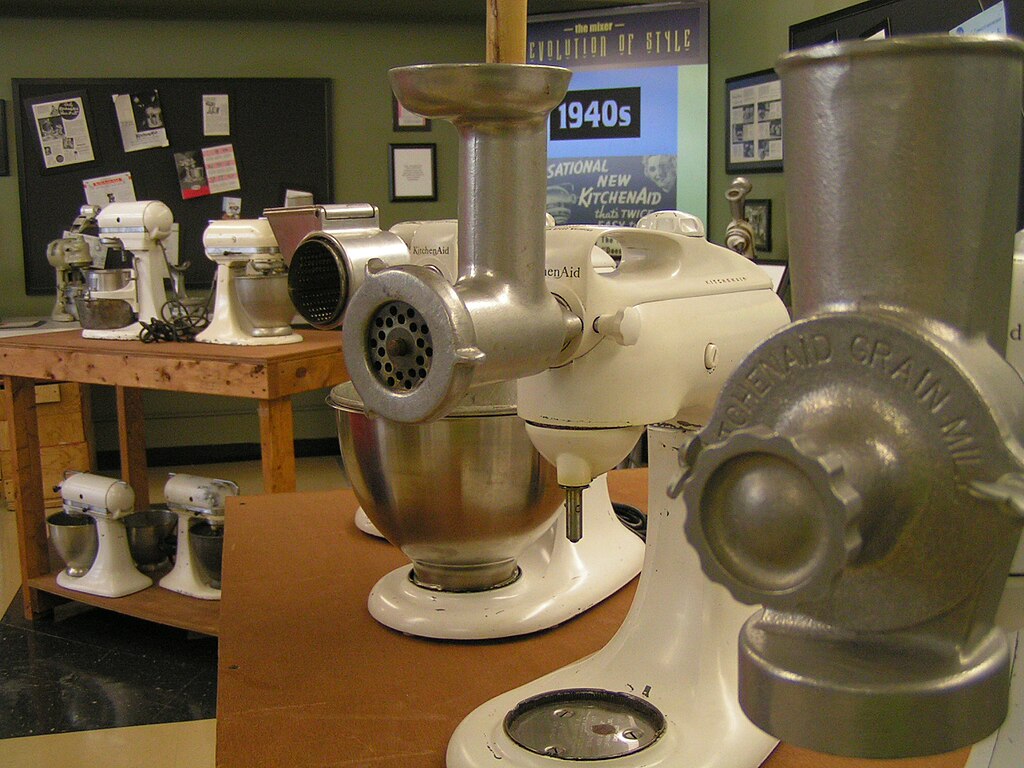
KitchenAid introduced its iconic stand mixer, the Model H-5, in 1919. Early models with the original Hobart motor are highly collectible. Working vintage mixers in original colors can sell for $300 to $1,000. Limited edition colors or attachments increase worth.
These machines were built to last and often still function well. The vintage styling has timeless appeal in any kitchen. Some come with original manuals or bowls, raising value. The brand’s long history adds to their desirability.
Antique kitchenware pieces offer more than just function; they carry stories from the past and reflect craftsmanship that is hard to find today. Collectors value these items for their rarity and timeless design. Whether you collect for nostalgia or investment, knowing the history and market value helps make informed choices. Exploring these vintage treasures can add unique character to any kitchen or collection.
This article originally appeared on Avocadu.
